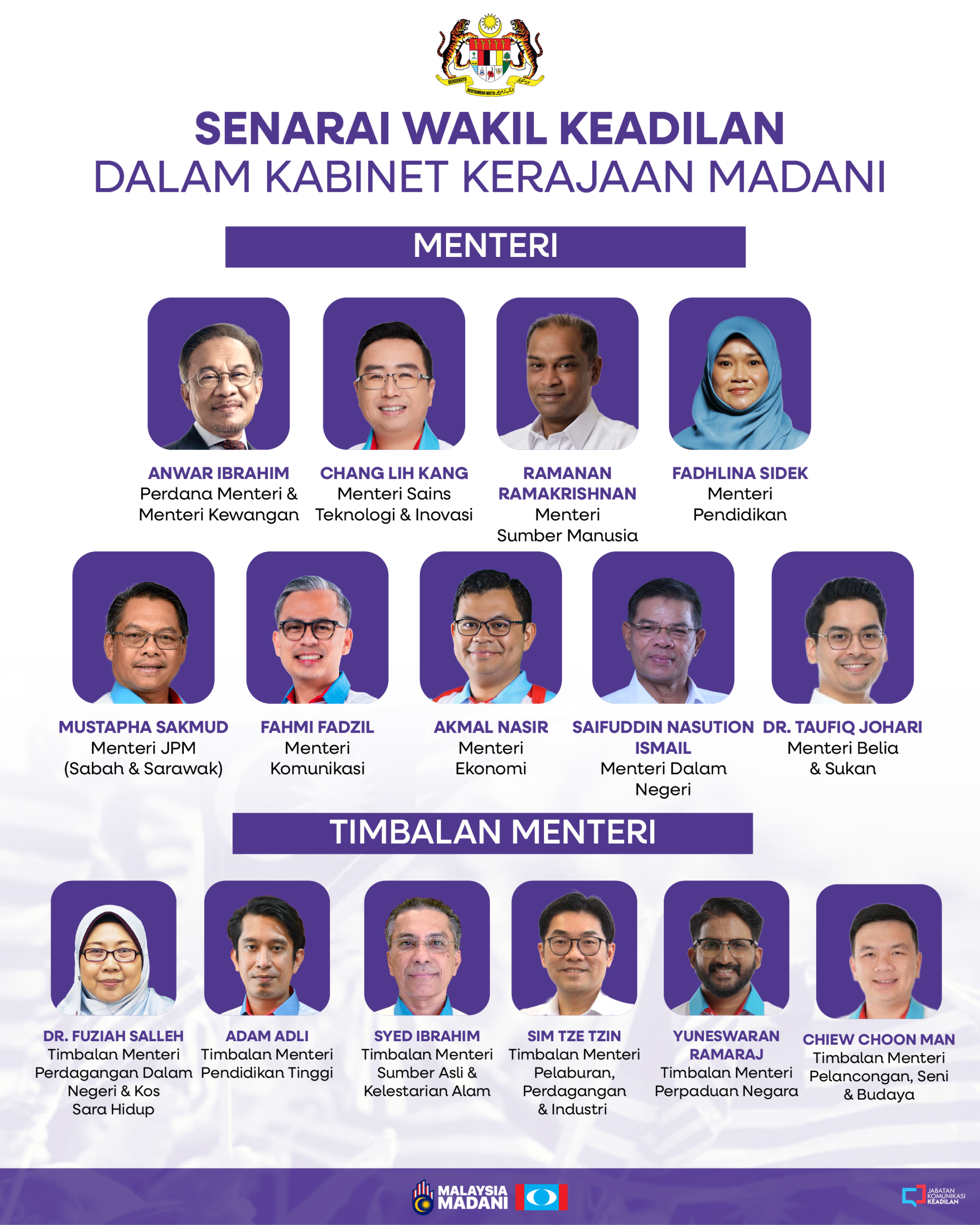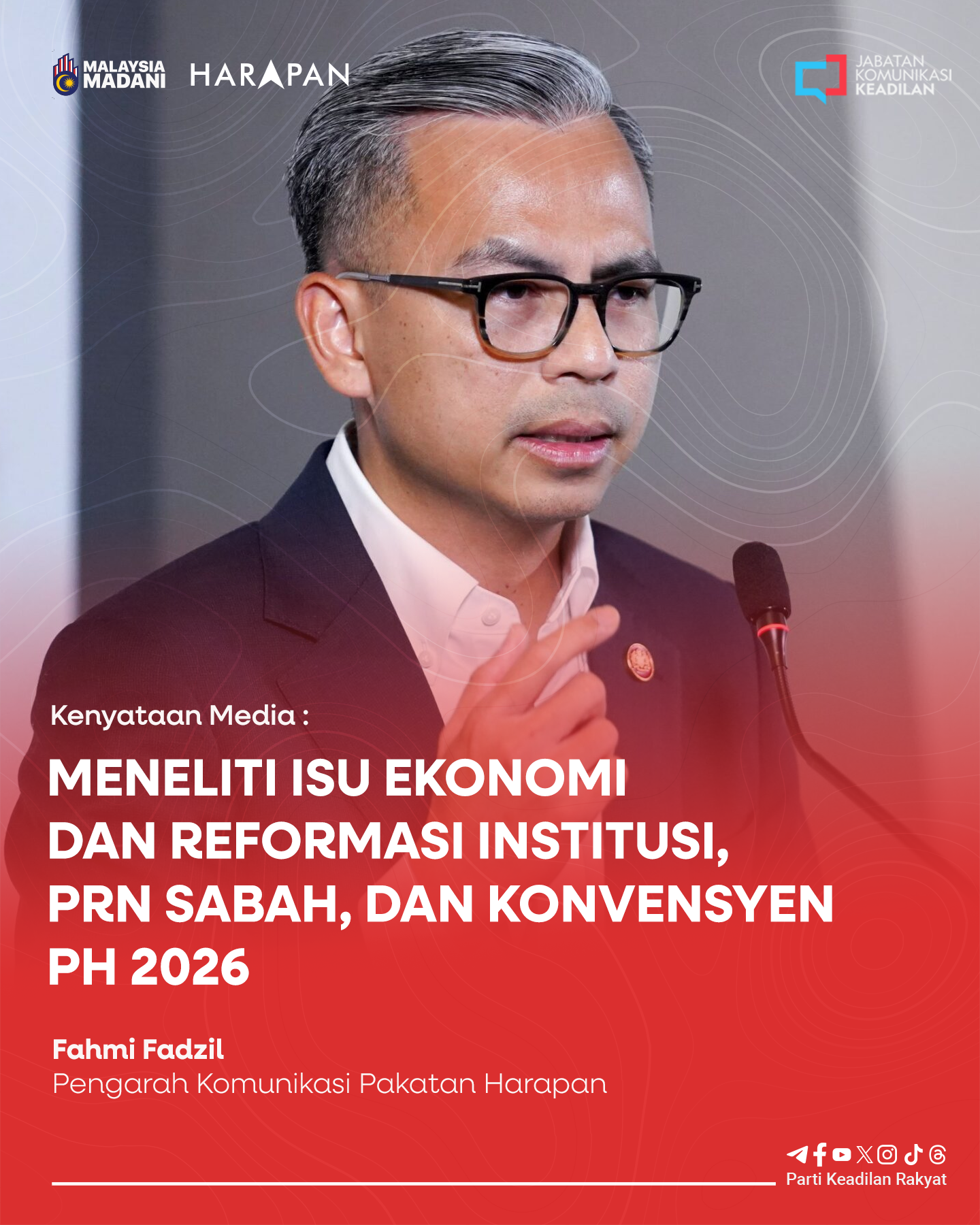

1. The announcement by the PN Government of the Enhanced Movement Control Order (EMCO), extending the Full MCO (FMCO), in the state of Selangor and Kuala Lumpur for 2
weeks, was largely anticipated.
2. While the nation has witnessed the MCO 3.0 and later the FMCO and now the EMCO, our daily numbers hovered stubbornly around 6000 to 7000, and our daily positive percentage stood unrelentingly at 8.21% as compared to 6.99% a month ago.
3. Admittedly, despite a whole host of public health responses to save lives and limit transmission, the verdict is out that MCO 3.0 has miserably failed. Going by almost all epidemiological indices of a pandemic; of increasing case fatality rates, cases brought-in-dead, high test positivity rates, and a high proportion of sporadic cases and health facilities, especially of ICU-related care overwhelmed, are evident indications that the current system and processes are inadequate.
4. The PH Health Committee concurs with the conclusions of the Health and Sciences Covid-19 Advisory Group of Experts' (EAG) position of wanting an urgent re-evaluation of both policies and practices. Without the full complement of public health tools e.g. FTTIS, a lockdown would be underpowered to mitigate the 4th wave.
Besides, the untold agony on lives and livelihood, the adverse long-lasting impact on the 'lost generation' of our children and the devastation on the national economy are unaccountable.
5. The PH Health Committee strongly advocates that before we are quick at being 'prescriptive' on 'lockdown', let us be clear of the roles and functions of 4 main variables in this pandemic. It is also important to appreciate the close relationship and inter-connectivity of the 4 variables actually. Failure to understand these dynamics would result in the likes of the present lockdown that has failed to bend the pandemic curve and would be futile in the face of the impending 4th wave.
6. Briefly, let us understand the 4 variables and how the various measures work.
1. The 'Activity Rate' of humans will determine daily encounters where a positive person infect others. Lockdown reduces the Activity Rate and the tighter the lockdown, the lower the activity rate and hence the less chance of spread.
2. The 'Infectivity Rate' or chance of spreading, will be reduced by wearing masks, physical distancing and improving ventilation. Surely, observing SOPs helps to reduce the Infectivity Rate.
3. The 'Immunity Rate' reflects the immune status of the population. The more immunised persons there are (through Vaccination or after being infected), the lesser the number of susceptible persons to covid infection. Hence, outbreak fizzles out in a Herd Immunity setting.
4. Finally, the 'lnfectious Period' represents the number of days an infectious person spends in the community, going about their usual activities. The longer time he spends outside and meet others, the greater the chance of spread.
Hence, in short, we see the role of FTTIS or How 'Finding, Testing, Tracing, Isolating and Supporting' of the infected persons (especially the asymptomatics), will help reduce the spread. Again, by increasing testing and followed by rapid contact tracing and speedily isolating them, we actually reduce their infectious duration to infect others.
7. As we earlier alluded, the 4 variables work closely in tandem. We can now appreciate that by strengthening FTTIS, we reduce the 'infectious duration and by double-masking we reduce the 'Infectivity rate'. While 'lockdown' is good to reduce the 'Activity Period', hence reducing the virus spread, we cannot be in lockdown indefinitely, without destroying 'lives and livelihood'.
8. In the final analysis therefore, the strengthening of FTTIS, coupled with rapid automated contact tracing and speedy isolation, we in fact could reduce our reliance on lockdown or make it short as possible.
9. The failures of a rapid response FTTIS has been repeatedly flagged by various quarters including the Expert Advisory Group. In fact, some of the indicators utilized by the MOH, notably the Positive Rate runs counter to the benchmark set by the WHO. Very specific recommendations and Key Performance Indicators of the FTTIS have been forwarded to the Ministry of Health. They have adamantly refused to transform their FTTIS policy and it is business as usual in the CPRC. The nation is paying a dear price for their folly.
10. Better late than never. The MOH must reform its public health management of the pandemic with the pointers suggested in this communiqué. Only through this shift of strategy, the Safe Opening or Reboot of Our Economy and Livelihood, could be realistically pursued, until such time, when Herd Immunity is achieved through a warp speed vaccination programme.
YB Datuk Seri Dr Dzulkefly Ahmad (Ahli Parlimen Kuala Selangor, AMANAH)
YB Dr Lee Boon Chye (Ahli Parlimen Gopeng, KEADILAN)
YB Dr Ong Kian Ming (Ahli Parlimen Bangi, DAP)
YB Datuk Wira Dr Mohd Hatta Md Ramli (Ahli Parlimen Lumut, AMANAH)
YB Dr Kelvin Yil (Ahli Parlimen Bandar Kuching, DAP)
YB Sim Tze Tzin (Ahli Parlimen Bayan Baru, KEADILAN)
YB Alice Lau (Ahli Parlimen Lanang, DAP)
YB Dr Siti Mariah Mahmud (EXCO Kerajaan Negeri Selangor)
YB Dr Norlela Ariffin (EXCO Kerajaan Negeri Pulau Pinang)
YB Veerapan Supramaniam (EXCO Kerajaan Negeri Sembilan)
YBhg Dr Niekmah Adam (Angkatan Wanita Amanah Negara, AMANAH)
YBhg Dr Zaliha Mustafa (Majlis Pimpinan Pusat, KEADILAN)





